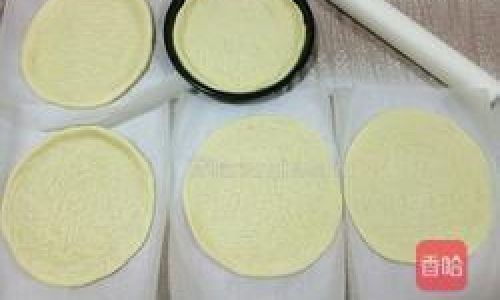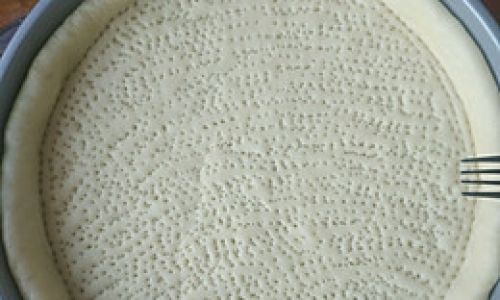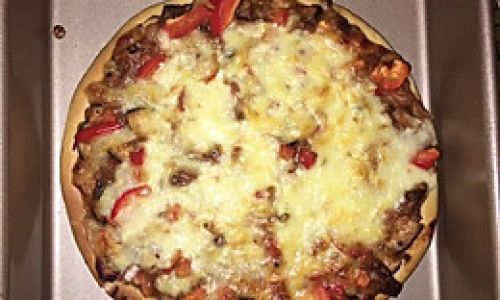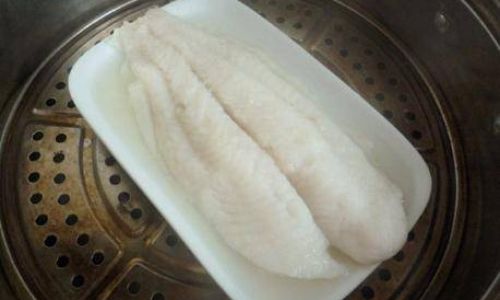Introduction
Homemade pizza is a culinary delight that combines simplicity with endless creativity. While store-bought crusts offer convenience, there’s unparalleled satisfaction in crafting a pizza from scratch, starting with the foundation: the crust. An 8-inch pizza crust is the perfect size for personal pies, intimate dinners, or experimental toppings. This article will guide you through the process of creating a golden, crispy, yet chewy pizza crust tailored to your taste. We’ll explore ingredient selection, dough preparation, shaping techniques, and baking methods to ensure your homemade pizza rivals your favorite pizzeria’s offering.
Ingredients: The Building Blocks of Flavor
The quality of your pizza crust begins with the ingredients. While the list is short, each component plays a critical role. Here’s what you’ll need:
- Flour: All-purpose flour is the most accessible option, but bread flour (with its higher protein content) yields a chewier crust. For a gluten-free alternative, use a 1:1 gluten-free baking blend.
- Water: Warm water (105–115°F or 40–46°C) activates the yeast. Avoid hot water, which can kill the yeast, or cold water, which slows fermentation.
- Yeast: Instant dry yeast is convenient, but active dry yeast works too (dissolve it in water first). For a sourdough twist, substitute 20% of the flour with ripe sourdough starter.
- Salt: Enhances flavor and controls yeast activity. Use kosher or sea salt for the best results.
- Oil: Olive oil adds richness and aids in browning. Substitute with avocado oil or vegetable oil if preferred.
- Sugar (optional): A pinch of sugar feeds the yeast and encourages browning, but it’s not mandatory.
Variations:
- Whole Wheat Crust: Replace 25–50% of the all-purpose flour with whole wheat flour for a nutty flavor.
- Herb-Infused Crust: Add dried herbs like oregano, basil, or garlic powder to the dough for aromatic depth.
Step-by-Step Dough Preparation
Activating the Yeast
In a large mixing bowl, combine warm water, sugar (if using), and yeast. Stir gently and let it sit for 5–10 minutes until frothy. This “proofing” step confirms the yeast is active. If no bubbles form, discard the mixture and start fresh—your yeast may be expired.

Mixing the Dough
Add flour, salt, and olive oil to the yeast mixture. Stir with a wooden spoon or dough whisk until a shaggy dough forms. For a smoother texture, transfer the dough to a floured surface and knead by hand for 8–10 minutes. Alternatively, use a stand mixer with a dough hook attachment on low speed for 5–7 minutes. The dough is ready when it’s smooth, elastic, and springs back when poked.
First Rise (Fermentation)
Place the dough in a lightly oiled bowl, turning it to coat. Cover with a damp cloth or plastic wrap and let it rise in a warm, draft-free area for 1–2 hours, or until doubled in size. This fermentation period develops flavor and texture. For a slower, more complex taste, refrigerate the dough overnight after the first rise.
Shaping the Crust
Gently punch down the dough to release air bubbles. Transfer it to a lightly floured surface and knead it for 1–2 minutes. For an 8-inch crust, divide the dough into a 6–7 oz (170–200g) portion. Using your fingertips, press the dough into a flat disk, working from the center outward. Leave a slight rim for the crust. Avoid over-flouring the surface, as excess flour can make the crust dry.
Pro Tip: If the dough resists stretching, let it rest for 5 minutes to relax the gluten.

Second Rise (Optional)
For a lighter, airier crust, let the shaped dough rise for 20–30 minutes before baking. This step is optional but enhances the crust’s texture.
Baking Methods: Achieving Perfection
Oven Baking
- Preheat: Crank your oven to the highest temperature (ideally 500–550°F or 260–290°C) with a pizza stone or steel inside. Preheating for at least 45 minutes ensures even heat distribution.
- Prep: Lightly flour a pizza peel or the back of a baking sheet. Transfer the shaped dough onto the peel and add toppings.
- Bake: Slide the dough onto the preheated stone/steel and bake for 8–12 minutes, rotating halfway, until the crust is golden and the cheese bubbles.
Skillet Method
For a crispy, charred crust, cook the dough in a preheated cast-iron skillet:

- Heat the skillet over medium-high heat for 5 minutes.
- Place the shaped dough in the skillet and cook for 3 minutes until bubbles form.
- Flip the dough, add toppings, and transfer the skillet to a 500°F oven for 5–7 minutes.
Grill Method
Perfect for summer, grilling imparts a smoky flavor:
- Preheat the grill to medium-high heat.
- Brush one side of the dough with olive oil and grill oil-side down for 2–3 minutes.
- Flip, add toppings, and close the lid. Grill for 5–7 minutes until melted and charred.
Topping Tips for Balance
- Sauce: Use a thin layer to prevent sogginess. Homemade tomato sauce, pesto, or olive oil with garlic are excellent choices.
- Cheese: Low-moisture mozzarella is classic, but provolone, cheddar, or vegan alternatives work too. Sprinkle cheese to the edge for a golden border.
- Proteins: Pre-cook meats like pepperoni, sausage, or bacon to avoid undercooked toppings.
- Vegetables: Slice veggies thinly to prevent excess moisture. Blanch dense vegetables like broccoli first.
Troubleshooting Common Issues
- Dense, Tough Crust: Over-kneading or using too much flour. Knead until just smooth, and use minimal flour during shaping.
- Soggy Center: Excess sauce or uncooked toppings. Use a light hand with sauce and pre-cook wet ingredients.
- Burnt Bottom: Oven too hot or dough too thin. Lower the temperature slightly or move the pizza to a higher rack.
- Undercooked Crust: Oven not hot enough or dough too thick. Preheat thoroughly and ensure the dough is stretched evenly.
Storage and Freezing

- Refrigeration: Store risen dough in an airtight container for up to 2 days. Bring to room temperature before using.
- Freezing: Divide the dough into portions, wrap tightly in plastic, and freeze for up to 3 months. Thaw overnight in the refrigerator.
Advanced Techniques for Pizza Enthusiasts
- Cold Fermentation: Refrigerate the dough for 24–72 hours after the first rise. This slow fermentation deepens flavor and improves digestibility.
- Poolish Starter: Create a pre-ferment by mixing equal parts flour and water with a pinch of yeast. Let it ferment overnight before incorporating it into the dough.
- Wood-Fired Oven: If you’re lucky enough to own one, cook the pizza at 700–900°F for 60–90 seconds for a charred, leopard-spotted crust.
Conclusion
Crafting the perfect 8-inch pizza crust is an art that balances science and creativity. By mastering the basics of dough preparation, fermentation, and baking techniques, you can elevate your homemade pizza to new heights. Whether you prefer a thin and crispy Neapolitan-style crust or a thick and chewy Detroit-style pie, the key lies in patience, practice, and a willingness to experiment. So fire up your oven, gather your favorite toppings, and savor the satisfaction of a pizza made entirely from scratch. Buon appetito!





0 comments